Frequently asked questions
Magnets
- What is magnetic flux density?
Magnetic flux density refers to the magnetic flux (the density of the number of lines of magnetic force) through a unit area. The SI unit for magnetic flux density is the Tesla (T) and for the CGS unit (Mx/cm2) it is Gauss (G).The surface magnetic flux density shown as a property of the magnet which has been processed and made into a product, may be a value produced by a measuring device such as a gaussmeter or a calculated value. There is no standard in the industry as measuring devices, conditions of measuring environments and calculation formulas differ according to the manufacturer. Since the values shown will differ according to the manufacturer even if the materials or shapes are the same, the values are for reference purposes and not guaranteed values.
- What does adsorptive power Kg mean?
Adsorptive power Kg is the weight in kilograms when the magnet is placed on a steel plate (thicker than the magnet itself) and pulled perpendicularly in the direction of the magnetization(Kilogram-force 1 kgf = 9.80665 N). The property value of "adsorptive power Kg" is the reference value of when the property is utilized to the maximum. It is not a guaranteed value.
- What is heat resistant temperature?
The magnetism of a magnet repeatedly changes from strong to weak and vice versa according to the environmental temperature. If the temperature rises by even just one degrees, the magnet weakens and if the temperature rises by one degrees it will become stronger. Therefore when choosing a magnet suitable for your environmental temperature, it helps to know the coercivity of the material. The temperature coefficient and maximum operating temperature can be calculated from the coercivity. The maximum operating temperature is referred to as the heat resistant temperature.
Usually the magnetism will completely return to its original state after cooling. However, it will become irreversible if the temperature exceeds the heat resistance temperature and the magnetism will not return to its original state even at normal temperature as the magnetism will have been lost in proportion to the amount that was exceeded. Remagnetizing a magnet with a reduction of magnetism due to heat can recover the magnetism to almost its original state. Also, the heat resistance temperature is not the Curie temperature at which the magnetism is lost totally. If the temperature exceeds the Curie temperature, the magnet will completely lose its magnetism and become just a plain stone.
- What is the tolerance variability of the surface magnetic flux density?
Similar to dimension tolerance, there is variability in surface magnetic flux density that is shown using units millitesla (mT) and gauss (G). Usually the surface magnetic flux density is considered not a guaranteed value but a reference value. The main reasons and levels for tolerances depend on the type of measuring device, usage environment and standard deviation (the variability of statistical values and random variables). Therefore, it is not necessarily shown as ±tolerance.
- Will the value for the surface magnetic flux density differ to the shown value if measured using a gaussmeter?
The surface magnetic flux density shown in units of millitesla (mT) or gauss (G) will differ depending on the manufacturer of the measuring device, type of device, precision of the probe (Hall elements), measured areas and environment temperature. For that reason, it is normal for the value shown in the product specification to differ from the actual value. Since measuring methods and environments differ according to the manufacturer, there are no regulated examination standards in the magnet industry. Therefore, the surface magnetic flux density stated in the product specification cannot be completely trusted. In order to standardize the surface magnetic flux density as a product specification, it is necessary to make clear the following measuring environment conditions.
Measuring environment conditions
- 1.The manufacturer of the measuring device, type of device and specification of the Hall elements.
- 2.Measured areas and gaps (spaces and adhesion)
- 3.Environment temperature
If importance is to be placed on the surface magnetic flux density when designing a magnet or magnetic product, please measure the surface magnetic flux density using your own measuring device in your own environment. Usually we design magnets or magnetic products taking the correlation between the reference value and actual value.
- What is the difference between tesla and gauss?
1 tesla = 10,000 gauss 1 militesla = 10 gauss
- If two magnets of the same size are placed on top of each other, will the flux density double?
No, it will not double.
The magnetic flux density is the amount of magnetic flux in a unit area. Although the flux density will become somewhat stronger by placing two magnets vertically on top of each other, since the area will be the same, there will not be much of a difference. For example, if two magnets that areφ10mmX10mm in size are placed on top of each other, the magnetic flux density will be almost the same as that of a magnet which isφ10mmX20mm.- If two magnets that have adsorptive power of 1kg are placed on top of each other will the total adsorptive power become 2kg?
No. However, if two magnets which are separated are used, it will become 2kg.
The main reasons why adsorptive power changes
- 1."The area of the magnet"
With magnets with the same magnetic flux density, the adsorptive power should double if the area is doubled. However in reality, if the area is doubled with the same thickness, demagnetization will intensify and the magnetic flux density will decrease. So the adsorptive power will not double. - 2."The gap between the magnet and metal that is attracted to the magnet"
As the gap increases, the adsorptive power substantially weakens. This is a big factor. - 3."The thickness and material of the steel plate"
Even if a magnet with extremely strong adsorptive power is used, if the steel plate is thin, the adsorptive power will substantially weaken. Also, even if the thickness is the same, iron containing a lot of carbon will weaken the adsorptive power.
How can you strengthen the adsorptive power using the same magnet?
It is possible to increase the adsorptive power by creating a valid magnetic circuit by attaching a steel cap to the magnet. A good example is the cap magnet. The magnet can be used efficiently by creating a magnetic circuit (a pathway for the magnetic flux) like a cap magnet.
- 1."The area of the magnet"
- I would like to attach and fix a 2kg item using a magnet. How should I choose the magnet?
Since there are personal preferences to how strong you would like the item fixed and it will differ according to the usage environment, we are unable to choose what would be best for you. You will have to try it out for yourself and decide. The adsorptive power will differ according to the [thickness of the steel plate], [surface condition], [pulling angle] and [personal judgment]. It would be quicker to buy a prototype which we sell in small quantities and actually try it out in your own usage environment.
Please choose a magnet based on the gadsorptive powerh which is stated as a magnetic property and buy a few different types of prototypes. In particular, the adsorptive power will differ according to the below conditions.
- -Amount of iron contained in the magnetic substance to be attached to the magnet
- -Thickness of the magnetic substance (iron plate, steel plate)
- -Condition of surface treatment
- -Pulling angle
- How much does the magnetism weaken over time?
The magnetism is permanent. Strictly speaking, the magnetism does weaken over the years, however the demagnetization is so slight that even after several decades, it will not feel as if it has really weakened. Therefore, magnets are commonly considered not to demagnetize and are called permanent magnets. Demagnetization more often occurs due to temperature changes and repellence load rather than demagnetization over time. Alnico magnets may require re-magnetization because they demagnetize easily due to the repellence load.
- When I used a neodymium magnet in an environment of 70℃, it demagnetized by approximately 10%. Please tell me how much demagnetization occurs, at approximately what temperature and after how long with magnets the size of neodymium magnets.
There is no specific answer. It will depend on the material and dimension (the size of the demagnetizing field that is applied to the magnet) of the magnet. If the magnet demagnetized 10% at 70℃, the magnet may be a low grade magnet.
- How can you tell which is the N pole and S pole of the magnet?
Usually there are no marks on the magnet showing which is the N pole and S pole. Although you can tell using an electronic device such as a gauss or tesla meter, an easier way is to place a compass or a magnet which does have the N and S poles marked on it close to it.
- Can you cut or polish a magnet as an after procedure?
After procedures cannot be done on magnets which have been magnetized. The following problems may occur if after procedures are done.
- 1. The particles and powder that are produced during processing are also magnetized so they may repel and scatter all over the place. A serious situation may arise in which magnetic powder which attaches to mechanical devices, tools and the surrounding areas becomes difficult to remove.
- 2. The processing tool used may become magnetized, reducing its precision.
- 3. With magnets such as neodymium magnets, the anti-rust surface treatment may come off and the magnet may oxidize causing rust.
An after procedure can be done for magnets which are not yet magnetized. However, the below environment and conditions are required.
- 1. There must be processing facilities such as a diamond wheel and wire cutter.
- 2. Neodymium magnets oxidize easily so they must be given an anti-rust surface treatment immediately after processing.
- 3. The magnet must be magnetized after processing.
- What is remanence Br?
Let us consider the process of magnetizing a magnet. A magnet is magnetized by applying a strong magnetic field to a magnetic material that has not yet been magnetized. Magnetization is a term that refers to the magnetic change in a material. A characteristic aspect of permanent magnets is that the magnetization still remains even after the magnetic field at the time of magnetization is removed. Very little magnetization is left in steel screws which is why they do not act as magnets. When the magnetic field is removed and the magnetic field that is applied to the magnet has become zero, the magnet will still have magnetic induction due to the remaining magnetization. This is referred to as remanence.
- What is Coercivity bHc(Hcb)?
It is also called B coercivity. It refers to the strength of the external magnetic field required to reduce the magnetic flux density (magnetic induction) to zero. This value is important when designing magnetic circuits. It is the value of the opposing magnetic field at which the value of the magnetic induction of the magnet becomes zero when the opposing magnetic field is applied to the magnet.
- What is coercivity jHc (or Hcj, iHc or Hci)?
It is also called I coercivity or J coercivity.
Detailed explanation
Coercivity refers to the external magnetic field strength required for canceling out magnetization. In other words, whereas bHc is an external magnetic field strength to make a state of magnetism zero, iHc is an external magnetic field strength to make a state of change of a type of property called magnetization zero.
When applying an opposing magnetic field that is stronger than B coercivity to a magnet, small magnetic domains (the smallest units in a magnet equivalent to the cells of a plant) in the magnet are overcome by the force of the opposing magnetic field and are changed (are magnetized) to face toward the direction of the opposing magnetic field. It is as if the magnetic domains acting as soldiers who are all facing in one direction up to this point are suddenly overcome by a force from the opposing direction, then raise the enemy flag and start to march in the opposite direction. This is called magnetic reversal. When the amount of magnetic domains facing the proper direction and the amount of the magnetic domains that raise the enemy flag are the same and have the exact same force, the magnetization of the magnet becomes zero.
The strength of the opposing magnetic field is I coercivity.
I coercivity is a value that is necessarily larger in the negative direction than the B coercivity. I coercivity in rare-earth magnets changes greatly according to the temperature and therefore care is needed. In order to select a rare-earth magnet (in particular a NdFe magnet) that is resistant to temperature, it is necessary to select one having an I coercivity that is large enough to not be affected by the B coercivity even if the I coercivity fluctuates a certain amount. Moreover, I coercivity is an important value for knowing how much magnetic field to add to the magnet when magnetizing the magnet. Generally a strong magnetic field of three to five times the I coercivity needs to be added depending on the material of the magnet.
The magnetic field unit for coercivity in the SI (MKS) system of units is denoted by ampere/meter (A/M) units and denoted by oersteds (Oe) units in the CGS system of units. For calculations, 1 Oe is equal to 80 a/m.- What is the maximum energy product (BH max)?
If the opposing magnetic field (H) is applied to the magnet, the magnetic induction (B) of the magnet will decrease.
Detailed explanation
It is the maximum value of the product (multiplication) of H with B (ie. B * H). The larger the value, the better the magnet. It can also be used in small sizes.
In other words, the energy product (B * H) is the amount of energy inside the magnet per unit volume. The maximum for B * H is the maximum energy product. Since this refers to the amount of energy inside the magnet, for example, in order to produce the same adsorptive power as a magnet with a maximum energy product of 20 will not necessarily have a quarter of the volume of a magnet with a magnet with a maximum energy product of 5.- What is the density of the magnet?
As the words suggest, it is the density (specific gravity) of the magnetic material. If the volume is the same, the larger the density, the heavier the magnet.
- Water 1.0
- Ferrite magnet (sintering) approx.4.8
- NeFe magnet (sintering) approx.7.5
- Alnico magnet (casting) approx.7.3
- Iron 7.9
- What is Curie temperature?
It is the temperature at which a magnetic material loses its ability to be magnetized.
Detailed explanatio
Obviously, a magnet is a magnetic material. It is sometimes believed that when a magnet is heated, the magnet can be used as a magnet until the Curie temperature is reached. However, this is not true. Heating a magnet demagnetizes it. In addition, when industrial magnets nowadays, excluding ferrite magnets are heated, the magnetic properties change at a low temperature before the Curie temperature is reached and lose their ability to become magnetized, thus becoming plain stones.
- What is vickers hardness?
It is the hardness of the material.
Detailed explanation
A diamond pyramid is pushed onto test material to make an indentation. The hardness, shown in Hv, is measured by the lengths of the diagonals of the indentation.
- Gypsum 60 Hv
- Fluorite 200 Hv
- Quartz sand 1100 Hv
The hard magnets (metal and sintered magnets) mentioned above approx. 600 Hv.
Although magnet manufacturers state the Vickers hardness in their catalogues, there is not much point in it. It may be in order to let customers know that a diamond cutter is required for processing.
When using a magnet, information on the brittleness is actually more useful than the hardness. Although the hardness shows how easy it is to scratch the magnet, the brittleness shows its strength against any impact. SmCo and ferrite magnets do not actually have good impact resistance properties. However for some reason, magnet manufactures do not disclose data on their brittleness.
Magfine's high air-tight and resin coating (Hi-Den coat) is especially effective in strengthening brittle magnets.- How do they affect watches, computers, electrical appliances and credit cards?
In principle, do not place a magnet near precision machinery, magnetic recording or electronic recording media. Recording devices or media such as magnetic recording media or electronic recording media use magnetism to record data. So data may disappear if a different magnetic field (magnet) is placed close by. Unfortunately there is no verified data showing the distance (cm) at which data may disappear or be destroyed since it depends on the material and size of the magnet and also the object that the magnet is being placed close to.
If a relatively weak magnet is placed next to old media such as cassettes, video tapes or floppy disks for a long period of time, distortion to noise or images may occur. With more recent types of media such as USB memory sticks or SD cards, there is no need for much concern as long as the magnet is not placed next to it for a long period of time. However, to be on the safe side, do not store them in the same place as magnets.- How do magnets affect the body?
Magnetism affects everything including the human body. There are many products that can help alleviate muscle tension etc, but although it is rare, there are some people who will feel fatigued. If you are using a pace maker, please ask the manufacturer of your pace maker. Magnets which have been surface treated, such as neodymium magnets may cause skin irritation.
- How to store a magnet
It is possible to prevent rusting of magnets which oxidize and rust easily such as neodymium magnet by storing them in an environment with low humidity and where the room temperature can be controlled. If storing them at home, use a dry box (moisture resistance storage case) or tupperware that can be tightly sealed.
- How to block the magnetism
With a magnet that emits a strong magnetic field, the adsorptive power can be reduced by wrapping it well in cushioning material and storing it away from magnetic materials. With a small magnet, by storing it in a magnetic box such as a tin can used for cookies etc, the magnetic field can be blocked.
- How to dispose a magnet
Since a magnet retains its magnetism permanently, disposing it with its strong magnetism can lead to an accident. To reduce the effect of the magnetism, please make sure to wrap the magnet several times before disposing it. If you ask for it to be picked up as industrial waste, it will be taken to a landfill. If you are disposing it as household waste, please follow instructions by your local municipal and dispose it as sharp or hazardous waste.
- I would like to attach a magnet using an adhesive. What adhesive should I use?
You should select the suitable adhesive according to the object to which you would like to attach the magnet to.
If you are attaching two magnets together
- Two component epoxide- based adhesive for metals, china or glassware
- Manufactured by Cemedine …. High-Super 5
- Manufactured by Konishi …. Bond Quick 5 etc.
If you are attaching a magnet to resin, plastic or wood
- Although it depends on the compatibility because both are of different materials, you can use multi-purpose adhesives.
Our store
- How can I get a sample (prototype)?
The minimum order for prototypes is 1 piece. Unfortunately we cannot provide them for free. All magnets regardless of size must also be sent by courier. We appreciate your understanding.
- Can you send it by Mail-Bin?
Regardless of size, all magnets must be packages so that the magnetic field does not leak outside. For that reason, we can only deliver using courier service. We cannot deliver by Mail-Bin because the magnetic field may leak outside and affect other items during transportation.
- Can you ship overseas?
Yes. However advance payment is required. We cannot be responsible for any delays due to examinations or returned packages by the customs of your country or be held liable for any damages. In developing countries or socialist countries, packages may be unfairly held at customs and unreasonable fees may be charged. Any customs or consumption taxes in the country of delivery must be paid by the recipient. In some cases fees may incur in Japan even if the product is to be shipped abroad. In such cases, consumption tax will be charged as for domestic transactions. If you are concerned about extra charges, please have the product delivered to an address in Japan.
- Is there a product catalogue?
Unfortunately we do not have a printed out catalogue. We only have an electronic catalogue which is available online.
- Can I come to the store to buy a magnet?
Unfortunately we work out of a factory and do not have a cashier or shop attendants. Neither do we have a display of our products.
- I would like a refund/ exchange. What should I do?
Based on the Act on Specified Transactions, products ordered online cannot be refunded or replaced regardless of whether the item has been opened or used and the price. We cannot make any exceptions because if we do other customers will also request the same. Please make sure to check your order before placing your order.
- 1.Please check your ordered product (mm, shape, material and number of pieces).
- 2.First purchase a few prototypes. (We do not recommend purchasing large volumes without first trying out a prototype.)
- 3.Products ordered cannot be refunded or replaced regardless of whether the item has been opened or used and the price.
Items can be replaced in the following events. Please contact us within 7 days after arrival of the product. (Even in the below cases, used items or items damaged after arrival cannot be replaced.)
- 1.If the item that arrived is not the item you ordered.
- 2.If the number of pieces that arrived is not the same as the number ordered and there are not enough pieces.

 Discs / Rods
Discs / Rods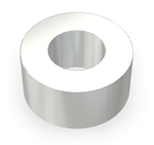 Rings
Rings Arc Segment
Arc Segment Squares
Squares Spheres
Spheres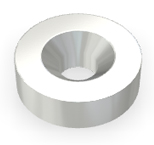 Disc Countersunks
Disc Countersunks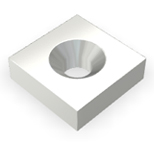 Square Countersunks
Square Countersunks A-Disc Countersunks
A-Disc Countersunks B-Disc Counterboreds
B-Disc Counterboreds C-Thread Male
C-Thread Male D-Thread Female
D-Thread Female E-Hooks
E-Hooks F-Eyelet hook
F-Eyelet hook G-Discs
G-Discs H-Filettatura Interno
H-Filettatura Interno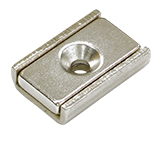 LA-Square Countersunks
LA-Square Countersunks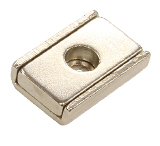 LB-Square Counterboreds
LB-Square Counterboreds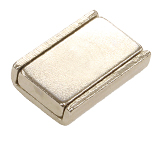 LG-Squares
LG-Squares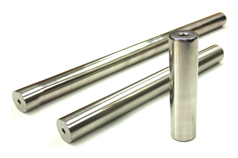 Bar
Bar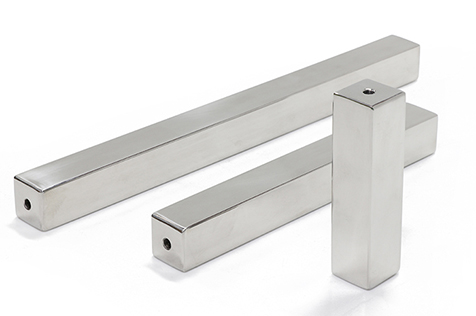 Square
Square Rectangular Filter
Rectangular Filter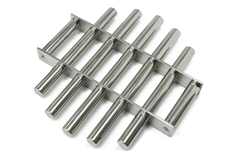 Round Filter
Round Filter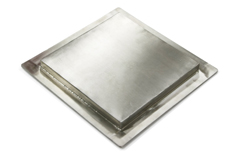 Plate
Plate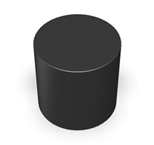 Discs / Rods
Discs / Rods Squares
Squares Discs / Rods
Discs / Rods Rings
Rings Squares
Squares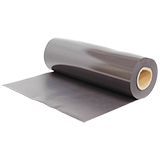 Rubber magnets
Rubber magnets Discs / Rods
Discs / Rods Squares
Squares